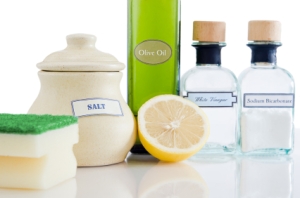Monoterpenes (MTs) are widely found in common citrus fruits such as oranges. While MTs are used as cleaning agents (try placing a small amount on the front hubcaps of your car to clean off the black grime) due to their solvent properties, they are far from being poisons. Indeed, nothing could be further from the truth for these wonderful, naturally occurring, and health-promoting substances. While the solvent properties of monoterpenes have been exploited clinically to dissolve gallstones (Igimi et al, 1976), monoterpenes are also the focus of much investigation in the area of cancer prevention and therapeutics.
Cancer prevention, inhibition, and regression are the most noteworthy attributes of the MTs. D-limonene (DL) and perillyl alcohol (POH) have been shown to be chemopreventive against mammary (Crowell, 1997), liver, lung, and UV-induced skin cancer (Uedo et al, 1999), and chemotherapeutic against both experimental mammary and pancreatic tumors. DL has also been shown to inhibit angiogenesis and metastasis of human colon cancer cells (Chidambara et al, 2012). The importance of which is discussed below. Perillyl alcohol stands out as effective against human pancreatic cancer (Stark et al, 1995), against colon and liver tumors (Broitman et al, 1996), and in reduction of vein graft intimal hyperplasia (Fulton et al, 1997). Furthermore, POH is effective as chemopreventive against colon carcinogenesis, prostate, and lung cancer (Reddy et al, 1997). These are further discussed in the context of the data.
What they are? As seen in Figure 1, DL is a monocyclic MT with POH, a metabolite of d-limonene, being its hydroxylated form. Monoterpenes are found in essential oils of many plants including Lemon (Citrus limon), Orange (Citrus aurantium var. sinensis per.), Grapefruit (Citrus paradisi), Caraway (Carum carvi), Dill (Anethum graveolens), Bergamot (Citrus bergamia), Peppermint (Mentha x piperita fol.), Spearmint (Mentha spicata), Citronella (Cymbopogon nardus), Lemongrass (Cymbopogon citratus) (Chanthai et al, 2012), and Tomato (Solanum lycopersicum). They are also associated with vegetables and some evergreen trees (Von Burg, 1995). POH, often distilled from lavender, is also found in cherries, mint, and celery seeds (Hohl, 1996) and can be produced synthetically. It is typically used as a flavouring agent, food additive, and fragrance and has been found to be a major volatile component of mother’s milk (Von Burg, 1995).

Figure 1 Structures of Perillyl Alcohol and Limonene
Many people regularly consume DL everyday without even knowing it. This is because DL is found in things such as orange juice, at concentrations ranging from 10-100 ppm, and chewing gum, which contains up to 2,300 ppm (Von Burg, 1995).
Molecular stages of cancer formation In order to understand the mode of action of the anticancer properties of monoterpenes, it is necessary to understand a little of the molecular events that surround cancer. Normal, non-cancer cells live a limited and constrained life. Once normal cells are formed, they have a finite number of cell divisions they undergo during their life-span and, with few exceptions, they remain relatively localized to the same point in the body during this entire process. As a cell lives and ages, it maintains an “awareness” of its surroundings via cell-cell communication molecules both on the cell surface and secreted. This allows the cells to determine if all around them is well and good and instructs them to maintain their relative positions in the body. Towards the end of a cell’s designated life-span, certain cellular events occur which instruct the cell to terminate. This is called apoptosis or programmed cell death and is a very normal and useful event for clearing away the old and making room for the new. While it may not sound like the most compassionate thing to do to old cells, the evolutionarily derived utility of such action affords the body a mechanism to remove cells which could possibly, although rarely likely, be on their way to becoming cancer cells via mutations.
Data Because the metabolites, which vary from species to species, of monoterpenes also show anticancer effects, it is necessary to discuss dosage in the context of the specifics of each study.
Written by Mark Brudnak, PhD, ND. This article appears in its entirety in the Spring 2013 Issue of the International Journal of Professional Holistic Aromatherapy. For more information visit http://www.ijpha.com
This article originally appeared in Positive Health Issue 53 – June 2000 and was revised by the author for the IJPHA in February 2013.
Images: © Mark Brudnak
Disclaimer The editor/publisher does not accept responsibility for the opinions, advice, and recommendations of its contributors. Furthermore, the IJPHA accepts no responsibility for any incident or injury to persons or property resulting from the use of any method, products, instructions or ideas contained within this publication.





